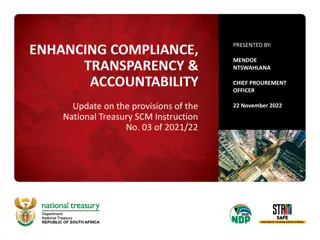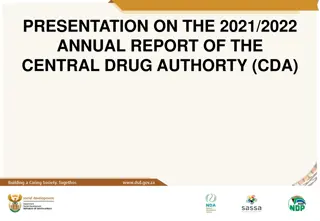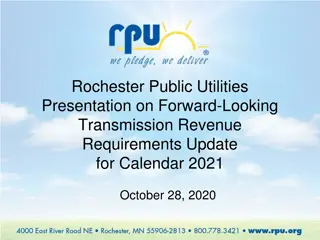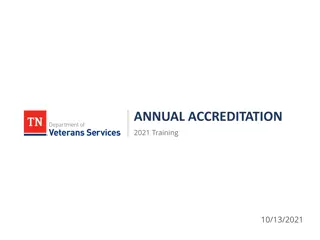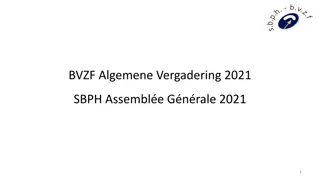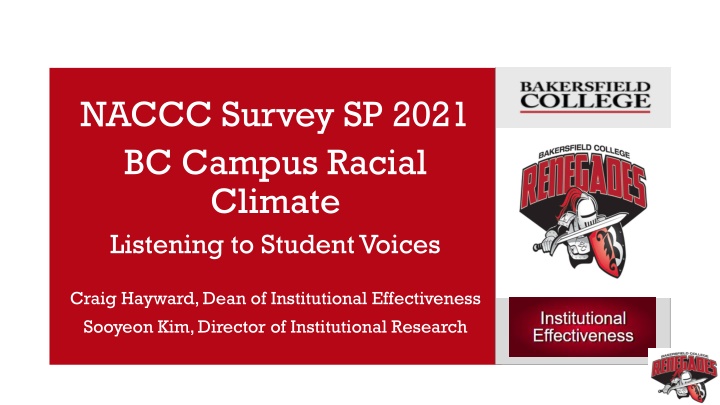
Campus Racial Climate Survey Findings at Bakersfield College
Explore the results of the National Assessment of Collegiate Campus Climate survey administered at Bakersfield College in Spring 2021, including insights on student experiences, demographic breakdowns, and strategies for improving racial climate on campus.
Download Presentation

Please find below an Image/Link to download the presentation.
The content on the website is provided AS IS for your information and personal use only. It may not be sold, licensed, or shared on other websites without obtaining consent from the author. If you encounter any issues during the download, it is possible that the publisher has removed the file from their server.
You are allowed to download the files provided on this website for personal or commercial use, subject to the condition that they are used lawfully. All files are the property of their respective owners.
The content on the website is provided AS IS for your information and personal use only. It may not be sold, licensed, or shared on other websites without obtaining consent from the author.
E N D
Presentation Transcript
NACCC Survey SP 2021 BC Campus Racial Climate Listening to Student Voices Craig Hayward, Dean of Institutional Effectiveness Sooyeon Kim, Director of Institutional Research
What is NACCC? The National Assessment of Collegiate Campus Climate (NACCC) is a quantitative national survey of undergraduate students. 15-minute web-based survey that includes six content areas Mattering and Affirmation Cross Racial Engagement Racial Learning and Literacy Encounters with Racial Stress Appraisals of Institutional Commitment Impact of External Environments l Learning and Literacy Developed and administered by the USC Race and Equity Center Provide information and data-driven guidance for improving the climate for all students. Chancellor Christian and Dean Hayward serve on the 30-member Racial Equity in Guided Pathways Commission at USC Race and Equity Center. Bakersfield College Office of Institutional Effectiveness
NACCC was administered to BC students (N=22,792) in Spring 2021 (1) Share perspectives from our students on ways they experience the campus racial climate. (2) Provide better information and more data-driven guidance for improving the climate for all students In total, 1,442 students participated in the survey (6.3% response rate) (3) Better understand and more strategically address racial climate issues on campus (4) Suggests action items to improve racial climate on our campus Bakersfield College Office of Institutional Effectiveness
Demographics Race/Ethnicity Age Groups PT vs FT Gender Identity Other 3% 1% Multi 13% Survey Respondents White 18% 2% 18 - 19 20 - 24 25 - 29 30+ 22% Native Hawaiian or 0% 27% 33% 38% Hispanic/Latino 56% 60% Native American 1% 30% 15% 72% Asian 5% African 4% Female Male Another gender identity Full-Time Part-Time Other Race/Ethnicity Age Groups Gender Identity PT vs FT Other 1% 2% Multi 4% White 20% Native Hawaiian or 18 - 19 20 - 24 25 - 29 30+ 0% 2% 21% 26% 32% BC Student Body Hispanic/Latino 67% 42% Native American 0% 56% 31% Asian 5% 16% 72% African 4% Female Male Another gender identity Full-Time Part-Time Other Bakersfield College Office of Institutional Effectiveness
Number of BC Students Number of Survey Respondents Response Rates Overall 23,595 1442 6% Student of color 80% 82% 6% White or Caucasian 20% 18% (19%) 5% (6%) Arab or Arab American 1% (N=15) Asian or Asian American (includes Filipino) 5% 5% 6% Black or African American 4% 4% 6% Hispanic or Latinx 67% 56% 5% Middle Eastern 0.3% (N=4) Native American and/or Alaska Native 0.26% 1% 24% Native Hawaiian and/or Pacific Islander 0.11% 0.3% 16% Another group not listed 1% 2% 14% Two or more races 4% 13% 23% Bakersfield College Office of Institutional Effectiveness
Six Survey Content Areas Mattering and Affirmation Cross Racial Engagement Racial Learning and Literacy Encounters with Racial Stress Appraisals of Institutional Commitment Impact of External Environments
Area 1: Mattering and Affirmation Selected Goal in This Content Area Students indicate the extent to which they feel they matter in classrooms and in various out-of-class campus spaces. Additionally, students indicate the ways and the frequency with which faculty members affirm them. Prepare college faculty to create affirming and culturally sustaining classrooms in which students, including racially minoritized students, believe that they matter. Why This Matters Institutional data indicates that 66% of all full-time faculty at Bakersfield College are White (CCCCO Data Mart, Fall 2020). This overrepresentation places added responsibility on White faculty to ensure the students of color they teach feel seen, heard, and cared for in their classrooms. Student perceptions of mattering in campus locations, classrooms, and at campus events Affirmation of students from White professors and from professors of color Reflective Questions Are the findings consistent with your experiences or observations at BC? Why or why not? What may contribute to these differences?
Area 1: Mattering and Affirmation 74% of White students indicated they mostly matter or strongly matter in classes with White professors % of students who indicated they mostly or strongly matter in classes with White professors vs Professors of color 64% of students of color indicated they mostly matter or strongly matter in classes with White professors 66% 75% 64% 75% 74% 75% 74% 69% 49% 71% 65% 76% 64% 77% OVERALL STUDENTS OF COLOR WHITE ASIAN BLACK HISPANIC OR LATINX TWO OR MORE RACES White Professors Professors of Color
Area 1: Mattering and Affirmation % of students who often or almost always experience concern for feelings or experiences from White professors vs professors of color Overall, students were more likely to experience concern for feelings from professors of color than from White professors 61% 73% 59% 73% 72% 75% 61% 73% 56% 79% 56% 72% 64% 72% OVERALL STUDENT OF COLOR WHITE ASIAN BLACK HISPANIC OR LATINX TWO OR MORE RACES White Professors Professors of Color
Area 1: Mattering and Affirmation How often have you experienced support for contributions to class discussions from White professors? 67% 19% 14% Students of Color White Students 80% 13% 8% Almost always or often Sometimes Never or once in a while How often have you experienced support for contributions to class discussions from professors of color? Students of Color 76% 17% 7% White Students 79% 11% 10% Almost always or often Sometimes Never or once in a while
Area 1: Mattering and Affirmation How can BC do better? Assess Campus Identity Build Standards of Inclusive Teaching Engage Race-Consciousness in Classroom Practices Train Staff for Inclusive Environments Assess Strengths and Weaknesses
Area 2: Cross Racial Engagement Selected Goal in This Content Area Students indicate the frequency and nature of their interactions on campus with same-race peers and with peers from different racial groups. Additionally, they report their level of comfort in discussions with other students about issues related to race. Facilitate meaningful dialogues inside and outside of classroom discussion that center racially minoritized students perspectives and experiences. . Why This Matters Racial dialogue is often the first and most frequent form of cross-racial interaction among students on college campuses. Students of color are overwhelmingly burdened with educating their White peers about race, thus becoming involuntary spokespersons Feelings regarding conversations about race with White students and with students of color Frequency of conversation about selected political topics with White students and with students of color Reflective Questions Are the findings consistent with your experiences or observations at BC? Why or why not? Do you engage in racial dialogues with people outside of your racial demographic? Why or why not?
Area 2: Cross-Racial Engagement % of students who feel moderately or completely encouraged about having conversations about race with Students of Color vs. White Students Student Group Students of color feel more encouraged when talking about race with students of color than with White students 34% OVERALL 24% 35% STUDENTS OF COLOR 23% 28% WHITE 28% Students of color White students 33% ASIAN 17% 45% BLACK 26% 34% HISPANIC OR LATINX 22% 36% TWO OR MORE RACES 24%
Area 2: Cross-Racial Engagement % of students who feel moderately or extremely open about being engaged in conversation about race with Students of Color vs. White Students Student Group Students feel more open when talking about race with students of color than with White students 34% OVERALL 17% 35% STUDENTS OF COLOR 17% 28% WHITE 13% Students of color White students 33% ASIAN 30% 55% BLACK 24% 34% HISPANIC OR LATINX 16% 36% TWO OR MORE RACES 16%
Area 2: Cross-Racial Engagement How can BC do better? Create racial dialogue opportunities Offer racial healing circles Engage staff and faculty Engage the whole community Provide ongoing and open communication
Area 3: Racial Learning and Literacy Students indicate if and where on campus they learn about their own racial identities and about other racial groups. Additionally, students indicate the extent to which they feel racial diversity is reflected in curricula and class discussions. Selected Goal in This Content Area Improve students understanding of the historical, social, institutional, and systemic relationships of power specifically related to race and racism in the United States. . Why This Matters The United States Census projects that the country s racial and ethnic demographics will shift such that non-Hispanic White people will no longer make up the numerical majority (Colb & Ortman, 2015). Therefore, preparing students for post-college environments reflecting this shift is an important learning outcome colleges and universities need to address. Where students learn about race and who on campus helps them learn about race Racial diversity reflected in classes within the student's major Reflective Questions Are the findings consistent with your experiences or observations at BC? Why or why not? Preparation for living in a racially diverse society How does your institution prepare students for living and working in a racially-diverse setting?
Area 3: Racial Learning and Literacy Where have you learned about race on campus? 45% 41% 41% 40% 39% 32% 26% 24% 13% 9% 8% 3% In Class Discussions Campus Clubs or organizations Multicultural or advocacy programs Converstions with other students outside of class Class assigned readings Nowhere on campus Students of Color White
Area 3: Racial Learning and Literacy Who helps you learn about race on campus? 31% Students of Color 28% 35% Professors of color 33% 32% White professors 26% 21% Staff of Color 18% 19% White Students 11% 16% White staff 12% White Student Student of color
Area 3: Racial Learning and Literacy How well is BC preparing you for working in a racially diverse setting? Overall 48% 25% 27% Student of color 47% 26% 27% White 56% 18% 27% Asian 47% 25% 28% Black 48% 10% 43% Hispanic or Latinx 47% 29% 24% Two or more races 53% 20% 27% Strongly or mostly preparing you Somewhat preparing you Slightly or not preparing you
Area 3: Racial Learning and Literacy How can BC do better? Revise co-curricular goals Conduct academic program reviews Learn from successful examples Break down resistance to learning about race Provide structured learning opportunities
Area 4: Encounters With Racial Stress Students assess the racial environment of BC, identify campus encounters they have experienced as racist (e.g. microaggressions, racial stereotyping, racial harassment, etc). Selected Goal in This Content Area Significantly reduce, if not entirely eliminate, the frequency with which students experience racial stress by disrupting oppressive practices and providing support on the margins. . Students indicate the impact of these encounters on their personal well-being and academic success Why This Matters Racism is a serious public health threat that directly affects the well-being of millions of Americans (Centers for Disease Control and Prevention, 2021). In addition, racial stress among students of color increasingly contributes to feelings of loneliness, isolation, and a lack of community. Ratings of campus racial tensions, racial segregation, and overall campus racial climate and impact on personal well-being Reflective Questions Frequency of experiencing racism in campus locations, academic spaces, at campus events, and impact on personal well-being Are the findings consistent with your experiences or observations at BC? Why or why not? What are existing resources on campus for students who encounter racial stress?
Area 4: Encounters with Racial Stress Being asked to represent the view of your entire race in classes Jokes related to race that make you uncomfortable Prevalence of Racial Microaggressions % of students who reported they have ever experienced the following on campus STUDENTS OF COLOR 9% STUDENTS OF COLOR 6% WHITE 6% WHITE 3% ASIAN 10% ASIAN 6% BLACK 12% BLACK 22% HISPANIC OR LATINX 8% HISPANIC OR LATINX 4% TWO OR MORE RACES 13% TWO OR MORE RACES 8% Being viewed as naturally less able than others in class STUDENT OF COLOR 7% WHITE 4% ASIAN 5% BLACK 12% HISPANIC OR LATINX 6% TWO OR MORE RACES 11%
Area 4: Encounters with Racial Stress Impact on Personal Well- being Administered to students who reported they have ever experienced any classroom racial microaggressions 56% 55% 42% 37% 31% 30% 28% 26% 26% 18% 13% 5% Increase in personal motivation or activism to make change Decline in academic performance Decline in physical health Decline in emotional well- being Feelings of frustation and/or anger Feelings of lonliness, not belonging, and/or isolation Students of Color (N=179) White (N=39)
Area 4: Encounters with Racial Stress Race-based verbal attack Race-based physical aggression Overt Racism on Campus % of students who reported they have ever experienced or heard about the following happening on campus WHITE 7% WHITE 2% ASIAN 8% ASIAN 5% BLACK 20% BLACK 14% HISPANIC OR LATINX 8% HISPANIC OR LATINX 4% TWO OR MORE RACES 17% TWO OR MORE RACES 7% Racist signs, symbols or graffiti WHITE 6% ASIAN 2% BLACK 16% HISPANIC OR LATINX 9% TWO OR MORE RACES 14%
Area 4: Encounters with Racial Stress Impact on Personal Well- being Administered to students who reported they have ever experienced any campus racist incidents 68% 58% 36% 31% 30% 27% 23% 19% 14% 12% 9% 5% Increase in personal motivation or activism to make change Decline in academic performance Decline in physical health Decline in emotional well- being Feelings of frustation and/or anger Feelings of lonliness, not belonging, and/or isolation Students of Color (N=166) White (N=22)
Area 4: Encounters with Racial Stress How racist is the overall environment of BC? Overall 67% 19% 10% 4% Students of color 65% 21% 10% 5% White 74% 13% 9% 4% Asian 59% 30% 8% 3% Black 59% 20% 12% 10% Hispanic or Latinx 67% 20% 10% 3% Two or more races 62% 21% 12% 5% Not at all racist Slightly racist Somewhat racist Mostly or strongly racist
Area 4: Encounters with Racial Stress How can BC do better? Designate counseling professionals to support racially minoritized students Provide professional development Engage race-related stress issues Create safe spaces
Area 5: Appraisals of Institutional Commitment Selected Goal in This Content Area Students evaluate their administrators commitments to racial diversity and inclusion at BC. Students also assess institutional leaders responses to racial problems on campus. The institution should demonstrate proactive efforts to decrease the likelihood of incidents of racism and racial violence on campus. Why This Matters The rhetoric of diversity, equity, and inclusion must accompany concrete changes to demonstrate a meaningful institutional commitment. Committing to action is especially important when the compositional diversity of an institution s faculty fails to reflect the racial and ethnic diversity of the students it serves. Rating of campus racial diversity Rating of how campus administration deals with racism or racist incidents Rating of administration's commitment to campus racial equity and diversity Reflective Questions Are the findings consistent with your experiences or observations at BC? Why or why not? How can campus leadership deal with racism more effectively?
Area 5: Appraisals of Institutional Support Hiring Faculty of Color Sponsoring Activities about Racial Diversity Institutional Commitment to Equity and Diversity % of students who believe the BC is mostly or strongly committed to the following OVERALL OVERALL 64% 65% STUDENTS OF COLOR STUDENTS OF COLOR 61% 63% WHITE WHITE 80% 76% ASIAN ASIAN 56% 67% BLACK BLACK 45% 45% HISPANIC OR LATINX HISPANIC OR LATINX 64% 65% TWO OR MORE RACES TWO OR MORE RACES 58% 61%
Area 5: Appraisals of Institutional Support How can BC do better? Create clear campus-wide messaging Map campus assets and resources Provide bias training for search committees Practice race-conscious leadership
Area 6: Impact of External Environments Selected Goal in This Content Area Be proactive and aware that students come from and are continually exposed to environments with differing levels of racial stress and violence apart from the campus community. Students may, for example, experience an entirely separate racial reality on campus than in their hometown or in the city/town surrounding campus. Students reflect on their sense of security and on their encounters with racism in their hometowns, in the cities/towns surrounding their campuses, and in online and social media environments Feelings of personal well-being in city/town surrounding campus and in hometown Why This Matters As students are entrusted to institutions by parents and families, colleges and universities have a responsibility to actively engage local law enforcement in developing anti-racist professional practices. Experiences of racism in external environments Reflective Questions Are the findings consistent with your experiences or observations at BC? Why or why not? How can BC make the areas that surround campus safer?
Area 6: Impact of External Environments Racism in Area Surrounding Campus Racism on Social Media OVERALL OVERALL 38% 39% Prevalence of Off-Campus Racism % of students who reported they have ever experienced racism in the following spaces STUDENT OF COLOR STUDENTS OF COLOR 40% 39% WHITE WHITE 28% 35% ASIAN ASIAN 33% 45% BLACK BLACK 69% 67% HISPANIC OR LATINX HISPANIC OR LATINX 38% 36% TWO OR MORE RACES TWO OR MORE RACES 45% 41%
Area 6: Impact of External Environments % of students who feel moderately or completely safe in the area surrounding BC Off-Campus Safety 34% 34% 34% 33% 31% 35% 30% OVERALL STUDENTS OF COLOR WHITE ASIAN BLACK HISPANIC OR LATINX TWO OR MORE RACES
Area 6: Impact of External Environments How can BC do better? Establish campus climate committee Evaluate campus environment and policies Assess pre-college experiences Create racial incident response messaging Partner with the community
Questions? Craig Hayward, Ph.D. Dean of Institutional Effectiveness Craig.Hayward@BakersfieldCollege.edu the campus environment Sooyeon Kim, Ph.D. Director of Institutional Research Sooyeon.Kim@BakersfieldCollege.edu Bakersfield College Office of Institutional Effectiveness



